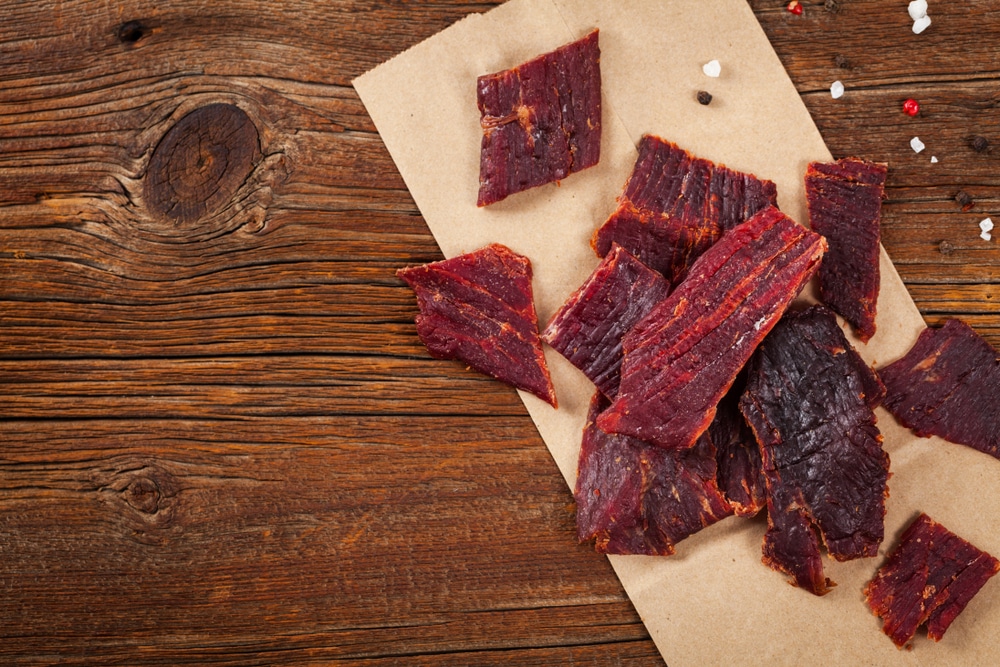
Jerky is a great snack for people who like meat because it’s the lean meat that’s dried up to preserve it for a longer time period. It is made by drying up the lean meat and is preserved in the right conditions to ensure it’s safe to be consumed for a longer time period. On the other hand, there are times when beef jerky is not stored properly, which results in mold. So, with this article, we are sharing more information on, “does beef jerky mold?”
Does Beef Jerky Mold?
The White Appearance On Jerky
It is commonly believed that beef jerky is a natural product. However, we need to remember that beef is not available in the square meat cubes, and there are various variations in texture and color. While some variations are safe and fine to consume, there are some that are not. Similarly, if you think it has some mold, it could be something else. Now, if you want to focus more on mold, we are sharing more information about it.
To begin with, mold is the microscopic fungi that are evident in the animal and plant matter – the mold spores can lead to white and green spots that are usually persistent on the beef jerky (spoiled jerky). It wouldn’t be wrong to say that mold is gross, but the best thing is that it can be easily seen by the naked eye. The common symptoms of mold include furry, dusty, and fuzzy substances, which can be grey, white, or green in color.
For the most part, mold is likely to have a spider-web pattern, and if the white stuff is looking like cobwebs, it is mold. In addition to appearance, the smell is another way of identifying the mold because the off smell is the biggest symptom of spoiled jerky. Having said that, if the mold has a cobweb pattern or an off smell, you must not consume jerky, and even if you are doubtful, just throw it out.
On the other hand, if you think that you can clean off the mold like on dry-cured country ham and hard salami and do the same with jerky, it is not possible. Even more, some people think about cutting off the mold-infested parts of the jerky, but you don’t know if the mold has already spread under the surface. This is because the root structure of the mold can dig deeper into the food, especially if your beef jerky is porous and pliable. For this reason, as soon as you see mold on jerky, it’s not safe.
In addition to this, you must remember that there is a variety of mold types. This is because some mold can be consumed, such as brie, salami, and blue-veined chain, but some can also lead to bad health impacts. This means that there are some good mold varieties, but you never know, so it’s not worth the risk.
What Happens If You Eat Beef Jerky With Mold?
If you have already consumed the beef jerky with mold and you have adverse health symptoms, we suggest that you go to the medical expert for better consultation. In the majority of cases, the healthier people won’t have many symptoms, even if the symptoms, will be minor, such as slight discomfort, nausea, and upset stomach. In any case, it’s always best to be on the safer side, so consult a medical professional.
Ways To Prevent Mold Development On Beef Jerky
If you have made beef jerky and want to ensure it doesn’t catch mold, we are sharing some tips that will help you out, such as;
- Make sure the beef jerky is properly dried up to make sure it is shelf-stable. For this purpose, you must dry it to the right level
- Make sure that the beef jerky is packed with minimal to zero oxygen. For this purpose, you can opt for a food sealer. On the other hand, if you don’t have a special sealing machine, you can always store it in the airtight bag
- Add some desiccant to the jerky package because it has the capacity of absorbing oxygen in the jar, which prevents the chances of mold development
- You must never try to refrigerate the beef jerky because it adds moisture and will damage the texture